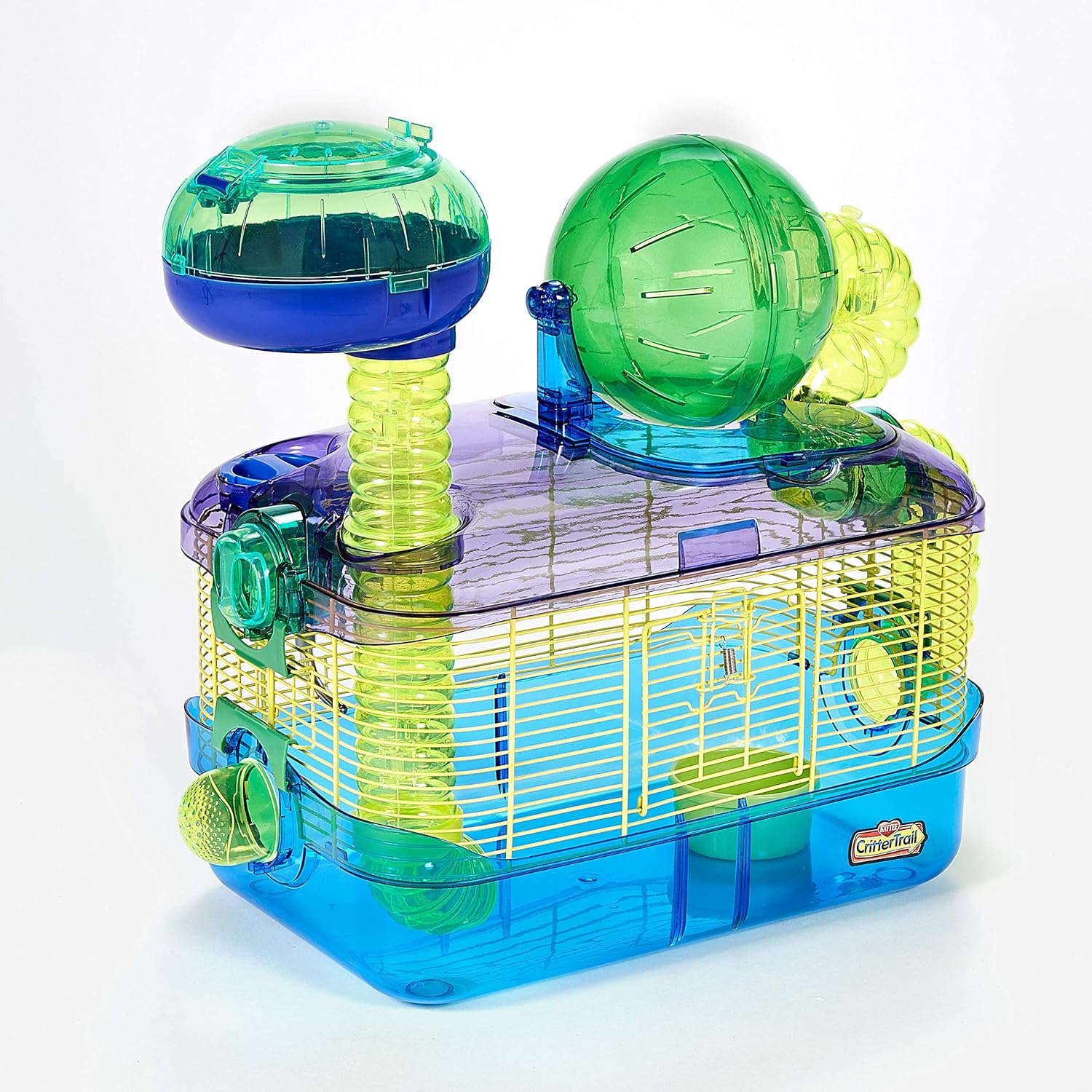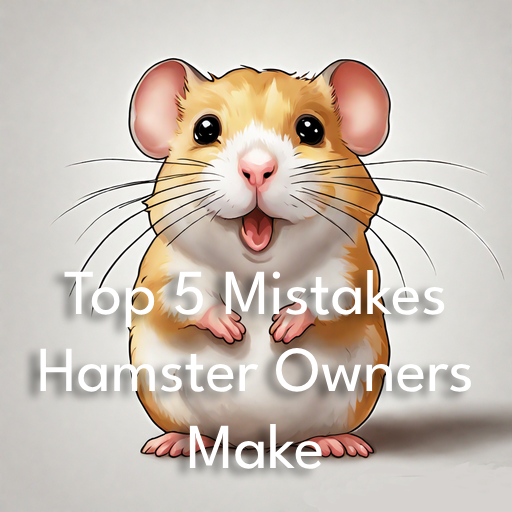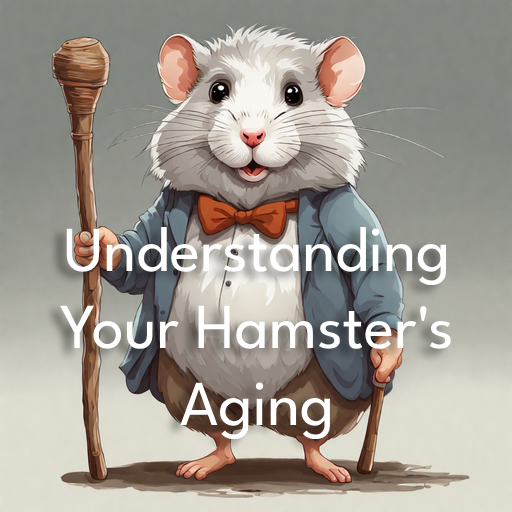Hamsters are undeniably adorable and make fantastic pets, but they come with unique needs and requirements. Unfortunately, many hamster owners make common mistakes that can impact the well-being of their furry friends. In this comprehensive guide, we’ll explore the most prevalent hamster care blunders and provide valuable insights on how to avoid them, ensuring that your hamster lives a long, happy, and healthy life.
Mistake 1: Inadequate Cage and Habitat
One of the most significant mistakes hamster owners make is providing an insufficient cage and habitat for their pets. Hamsters need a spacious, safe, and stimulating environment to thrive.
Cage Size:
Hamsters, especially Syrian hamsters, require a cage that provides ample space to explore, exercise, and create burrows. A cage with a minimum floor space of 360 square inches is recommended, but more extensive enclosures are even better. Ensure the cage has multiple levels, hideaways, and tunnels to encourage exercise and exploration. Our warm recommendation is this multi-level cage from Amazon that has already toys included together with the tunnels that enable you to connect it to another cage!
Proper Bedding:
Using the wrong bedding material or not providing enough of it can lead to discomfort and health issues for your hamster. Opt for safe bedding materials like aspen shavings, paper-based bedding, or hemp bedding. Ensure that the bedding is deep enough for burrowing, as this is a natural behavior for hamsters. One of the top-rated beddings on Amazon is this aspen bedding
Enrichment
Hamsters are intelligent and active creatures that need mental and physical stimulation. Provide toys, tunnels, and a hamster wheel for exercise. Regularly change the arrangement of toys and hideouts to prevent boredom. Also, consider adding a hamster ball or playpen to give your furry friend a change of scenery and more room to explore.
Mistake 2: Poor Diet and Overfeeding
Another common mistake hamster owners make is improper feeding and overfeeding. Providing the right nutrition is crucial for your pet’s health.
Hamster Pellets:
Feeding a diet primarily composed of high-quality hamster pellets is essential. These pellets contain the necessary nutrients and should make up the bulk of your hamster’s diet. Look for pellets that have a good balance of protein, fat, and fiber. These pellets from Amazon are a great choice as they have ingredients that hamsters eat in nature.
Fresh Foods:
Offer a variety of fresh vegetables, fruits, and occasional treats, such as small pieces of apple, carrot, or broccoli. These should be provided in moderation to avoid digestive issues and obesity. Fresh foods provide essential vitamins and minerals but remember not to overdo it. Always remove uneaten fresh food to prevent it from spoiling in the cage. For a more detailed guide on Hamster treats feel free to check our guide 😊
Water:
Always ensure access to fresh, clean water. Use a water bottle with a sipper tube to prevent spillage and contamination. Check the water bottle daily to ensure it’s working correctly. Our favorite water bottle with many positive reviews is this one
Portion Control:
Overfeeding can lead to obesity and other health problems. Follow the recommended portion sizes and monitor your hamster’s weight to adjust the feeding regimen accordingly. If you notice your hamster gaining or losing weight unexpectedly, consult your veterinarian for dietary guidance.
Mistake 3: Incorrect Handling and Socialization
Hamsters are delicate animals that require gentle and respectful handling. Mishandling can lead to stress, fear, and even biting.
Taming Process:
Take time to tame your hamster gradually. Start by allowing your hamster to get used to your presence and scent. Use slow movements and speak softly to create a sense of security. Initially, avoid picking them up but allow them to explore your hand. For more taming tips we’ve wrote an detailed article.
Avoid Waking Them During the Day:
Hamsters are nocturnal creatures, which means they are most active during dawn and dusk. One of the many mistakes hamster owners make is waking them during the day. That can be stressful for them, so respect their natural sleep schedule and limit interactions during their resting hours.
Never Squeeze or Grab:
Hamsters have fragile bones and can be injured if squeezed or grabbed too tightly. Always scoop them up gently, providing support for their body. If your hamster feels threatened, they may bite in self-defense, so always be calm and patient in your approach.
Socialization:
Socialization is crucial for hamsters. Spend quality time with your pet each day, allowing them to explore your hands, lap, or a secure play area. This bonding time will help build trust and strengthen your relationship.
Mistake 4: Inadequate Hygiene and Cleaning
Maintaining a clean and hygienic environment is essential to prevent health issues in your hamster.
Cleaning Schedule:
Establish a regular cleaning schedule for your hamster’s cage. Remove soiled bedding, food remnants, and waste daily. A more thorough cleaning should be done every few weeks. A clean environment helps prevent bacterial growth and keeps your hamster healthy. If you need more tips on cage cleaning feel free to check our detailed guide
Check for Wet Tail:
Wet tail is a severe intestinal condition that can affect hamsters due to stress or unsanitary conditions. Watch for symptoms like diarrhea, lethargy, and a wet or soiled tail, and consult a vet immediately if you suspect a wet tail. Early intervention is crucial in such cases.
Provide a Dust Bath:
Some hamster species, like Dwarf hamsters, need a dust bath to maintain their fur. Provide a shallow container with hamster-safe dust for this purpose. The dust helps absorb excess oils and keeps the fur clean and healthy. This desert sand from the Amazon is a perfect example of sand that hamsters enjoy.
Mistake 5: Neglecting Healthcare
Regular health check-ups and prompt medical attention are crucial for your hamster’s well-being.
Monitor for Health Issues:
Keep an eye out for any signs of illness or discomfort, such as changes in appetite, behavior, fur condition, or breathing. Early detection can make a significant difference in treatment. If you notice any unusual symptoms, consult your veterinarian promptly.
Parasite Prevention:
Protect your hamster from external parasites like mites and ticks by keeping their living environment clean. Some hamsters may need preventative treatments, so consult your vet for guidance.
Find a Hamster-Savvy Veterinarian:
Locate a veterinarian experienced with small animals and hamsters. Regular check-ups and immediate care for illnesses or injuries are vital. Discuss a health check-up schedule with your vet.
Conclusion:
Hamsters make wonderful pets, but they require proper care and attention to ensure their well-being. By avoiding these mistakes hamster owners make and following the recommended guidelines, you can provide a safe, happy, and healthy life for your furry friend. Responsible hamster ownership involves providing an appropriate habitat, a balanced diet, gentle handling, a clean environment, and proper healthcare. Your hamster will reward you with years of companionship, and you’ll enjoy the satisfaction of being a responsible and caring pet owner. Educate yourself about your hamster’s specific needs and always prioritize their well-being for a happy and harmonious life together.








